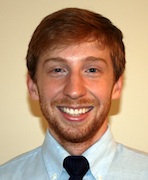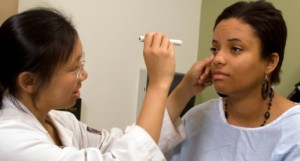Medical student Colin O’Shea is the first author on a paper published May 21 in the journal Pediatrics. Before beginning medical school, O’Shea worked at the National Human Genome Research Institute, part of the National Institutes of Health.
He was working with Charles Venditti, MD, PhD, a leading researcher at NHGRI studying methylmalonic acidemia(MMA) MMA is an inherited metabolic disorder in which the body can’t break down certain amino acids and fats, leading to a buildup of methymalonic acid and ammonia.
The NHGRI has a more detailed description of this research HERE.
Infants with MMA can have developmental delays, recurrent vomiting and seizures. The disease can be detected through metabolic screening for newborns, and a low-protein diet combined with dietary supplements can help manage the disease.
O’Shea’s research could give parents a better idea of what to expect, and give doctors clues for warning signs when monitoring a patient’s progress. His paper represents the largest study (43 individuals, over six years) so far of the cognitive and neurological status of people with MMA. He worked with a team of psychologists, clinicians and radiologists at the National Institutes of Health to compile information on participants. The ages at which the participants in the study were evaluated ranged from 2 to 32.
“Colin worked hard to make this happen, and I think the larger point is that students at the beginning of their careers can really make an impact,” says Venditti.
The data shows that the IQ scores of people with MMA vary quite a bit (the mean is around 85), with seizures and high ammonia levels being predictors of lower scores. O’Shea’s team found that the IQ scores of people with MMA tend to be lower than neurotypical individuals, but their scores are generally stable and cognitive decline is not a necessary feature of the disease. On neurocognitive tests, people with MMA do appear to have a particular deficit in processing speed. O’Shea, Venditti and their colleagues write that this finding was “particularly striking” and it may reflect damage to the part of the brain known as the basal ganglia.
“I am excited by the prospect of continuing to work in the field of inherited disorders,” O’Shea says. “That said, Emory has opened up many
doors to me with regard to future careers. I’ve enjoyed almost every subject I’ve been taught thus far, so I’m still deciding what path I’d
like to choose.”







